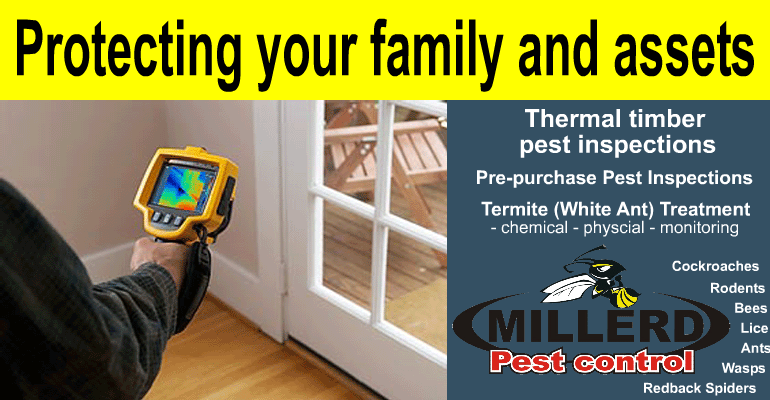| bookmark us | qwiklink business directory | associates | pest news |

| home | commercial pest control | termites | infrared inspections | pests treated | spiders | about us | inspection bookings | pest bookings |
|
|
||||||||||||||||||||||||||||||||||||||||||||||||||||||||||||||||||||||||||||||||||
 |
||||||||||||||||||||||||||||||||||||||||||||||||||||||||||||||||||||||||||||||||||
|
||||||||||||||||||||||||||||||||||||||||||||||||||||||||||||||||||||||||||||||||||
|
||||||||||||||||||||||||||||||||||||||||||||||||||||||||||||||||||||||||||||||||||
| Termites | Termites - Life History & Habits | Termite Species | Termites - Habits & Damage | Spiders | Redback Spiders | Black Widow Spiders | Funnel Web Spiders | Whitetail Spiders | Trapdoor Spiders | Wolf Spiders | Orb Spiders | Sac Spiders | Ants | Bees | Carpet Beetles | Clothes Moths | Cockroaches | Fire Ants | Fleas | Lice | Rodents | Wasps | Silverfish | Resource Links | |